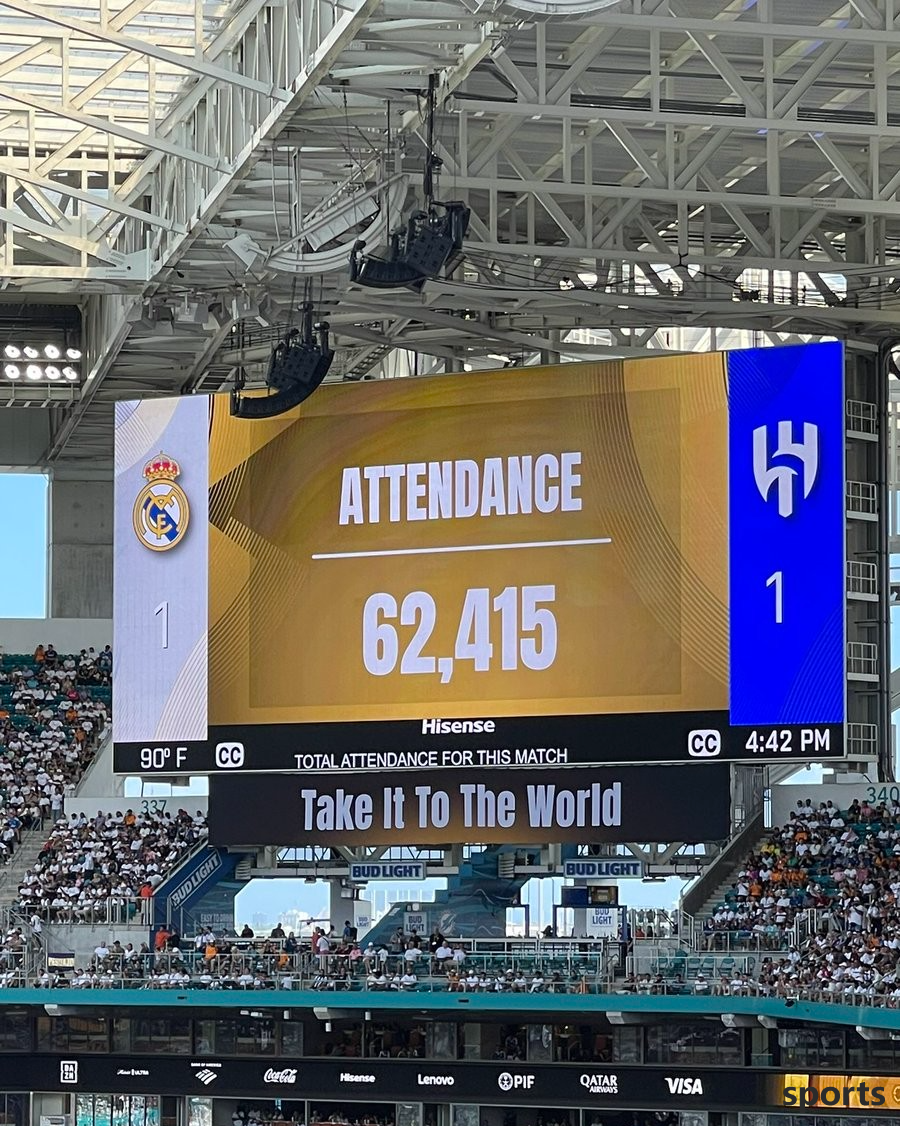Club World Cup: Real Madrid "rescue" FIFA, attendance rate finally reaches its peak
The 2025 FIFA Club World Cup is in full swing in the United States. However, this "club version of the World Cup" that was highly anticipated by FIFA President Infantino encountered the embarrassment of scarce audiences and low attention at the beginning of the game. Against this background, Real Madrid, which has come from afar, not only shoulders the mission of competing for the championship, but also has become a "life-saving straw" for FIFA to restore its image. The giants "save the court": Real Madrid has become the box office elixir This year's Club World Cup has expanded to 32 teams, aiming to create a global event comparable to the traditional World Cup. To this end, the event was selected in the United States and several large stadiums were opened, hoping to create a warm atmosphere for watching the game. However, reality is very different from the idea. Since the start of the game, empty stands have become the norm. For example, Chelsea's match against Los Angeles FC attracted only more than 20,000 spectators in the stadium with a capacity of more than 70,000 people; the attendance rate of the match against Urawa Red Diamonds was even more terrible, less than 17%, and less than 12,000 spectators were present. These data not only expose the lack of interest in non-European clubs by American fans, but also reflect the drawbacks of the current Club World Cup organization model. In such a deserted situation, Real Madrid is like a ray of light, becoming the only team that can truly drive box office and attention. Real Madrid ranked among the top five in the three group matches, with tickets even sold out in two of them. Real Madrid vs. Riyadh Crescent, a total of 62,415 fans came to watch the game, with an attendance rate of 95.5%. It set a new high in attendance rate for this Club World Cup, which is more than the previous opening match. This powerful team that has long surpassed the scope of football and became a symbol of world culture, has become a "lifeboat" for FIFA to maintain a decent "lifeboat" in this competition. The official report recently released by FIFA also emphasized Real Madrid's core role in increasing audience numbers and media attention. From a marketing perspective, Real Madrid is undoubtedly the ideal core brand. However, if the success of a global event must be supported by a few wealthy families, its sustainability will be a big question. The national pride and identity inspired by the national team competition are incomparable to club competitions. No matter how brilliant the club's history is, it is difficult to attract a large number of non-local fans to the scene around the world, especially in a country like the United States where football culture is not yet deeply rooted. Choose to hold a large-scale Club World Cup in the United States, which itself magnifies the risks. Originally, FIFA could choose to use a smaller and more ambience stadium, which is easier to fill and also brings better visual effects and game viewing experience. However, FIFA has chosen a more "magnificent" route and now it can only rely on superstar teams like Real Madrid to cover up the embarrassment. Infantino might argue that this is an opportunity to test for the 2026 World Cup, just as the past Federation Cup had served as a test ground for the World Cup. But any experiment should have a bottom line. If the empty stadium continues to be staged, fans will inevitably ask: Who is the Club World Cup for? Real Madrid can help FIFA through this new Club World Cup and prevent it from becoming a failure. But this is also a wake-up call: club events cannot copy the operating logic of national team events. In the future, FIFA can no longer expect another "Real Madrid" to appear to wipe the butt of those strategies that are out of reality. 


- Recent Posts
-
- BBC praises Chelsea: We have n
- More than 160 million have bee
- Suarez s game data: 5 shots, 3
- Three people officially announ
- Five major leagues have left t
- Suarez and Messi s Friends, ev
- 2025 Club World Cup semi-final
- One of the biggest regrets in
- Porto official: Argentine defe
- It is said that Liverpool will
- Hot Posts
-
- Club World Cup Winning Predict
- Another upset! Swedish star Mo
- [Today s Event] 3-string 1: Ma
- Upset! Real Madrid draws again
- The empty goal failed! The Chi
- Real Madrid has made great cha
- Barcelona Lamacia scored a goa
- Unwilling to give up! De Bruyn
- Manchester United has a new mi
- Master level! The 17-year-old
- 92 minutes of the game! The pl
- Alonso s intervention and inte
- Foden took Burberry s hard pho
- Italian media: Arnau & Cor
- The number of successful playe
- He is the only player called "
- The Club World Cup was also di
- 40-year-old Cazorla: Before re
- Donnarumma suggests that Paris
- Chelsea faces the trouble of c
- search
-
- Links
-
